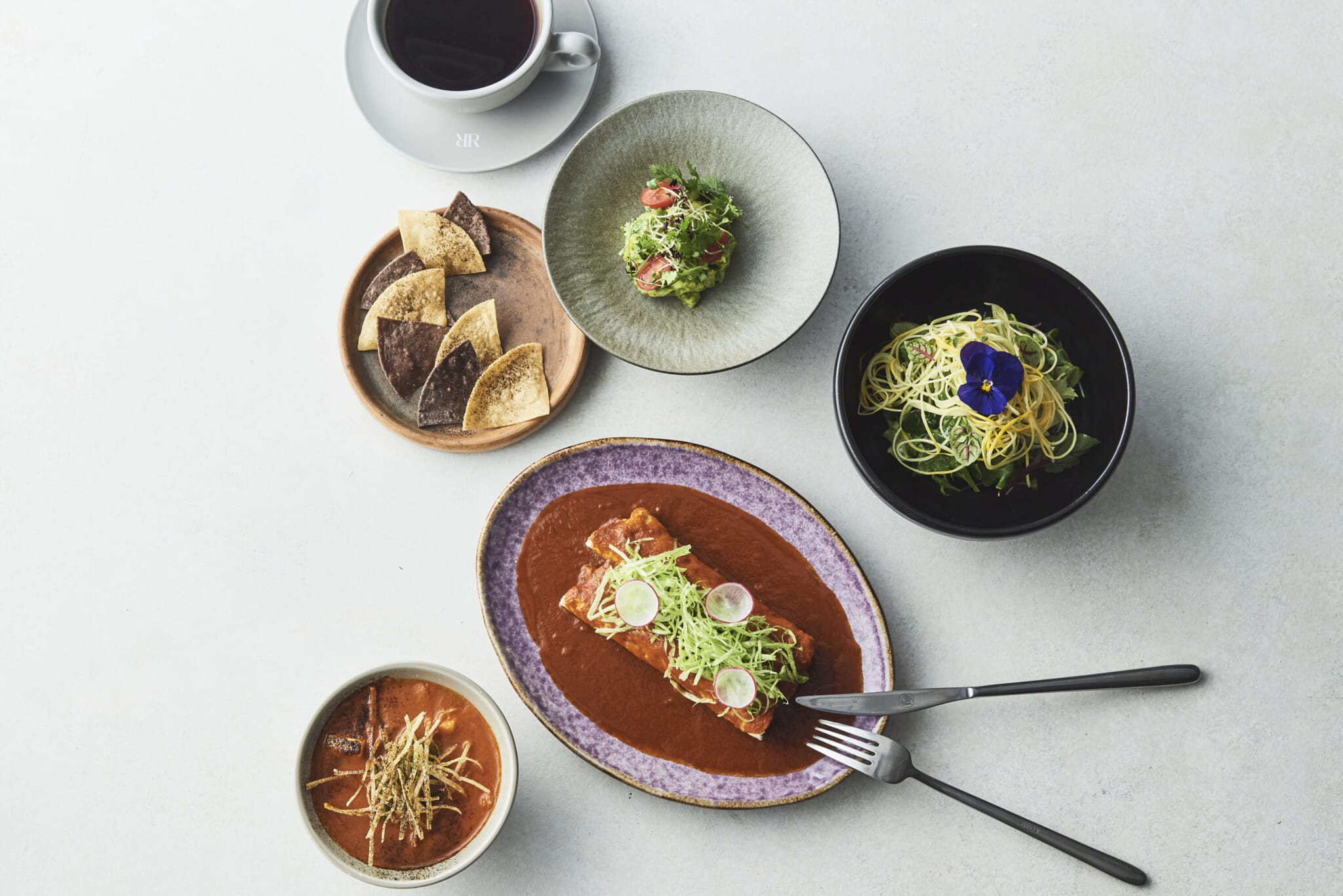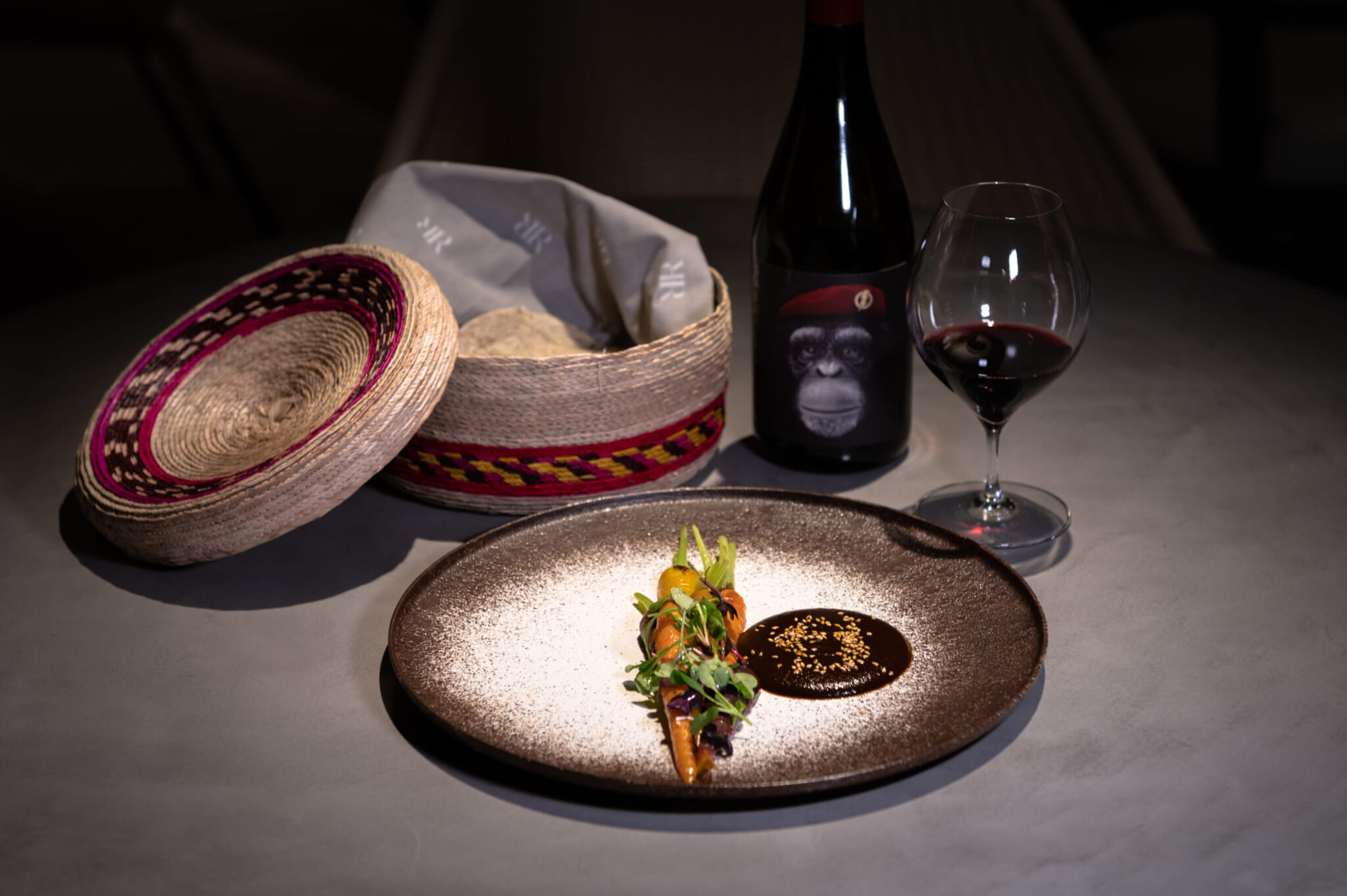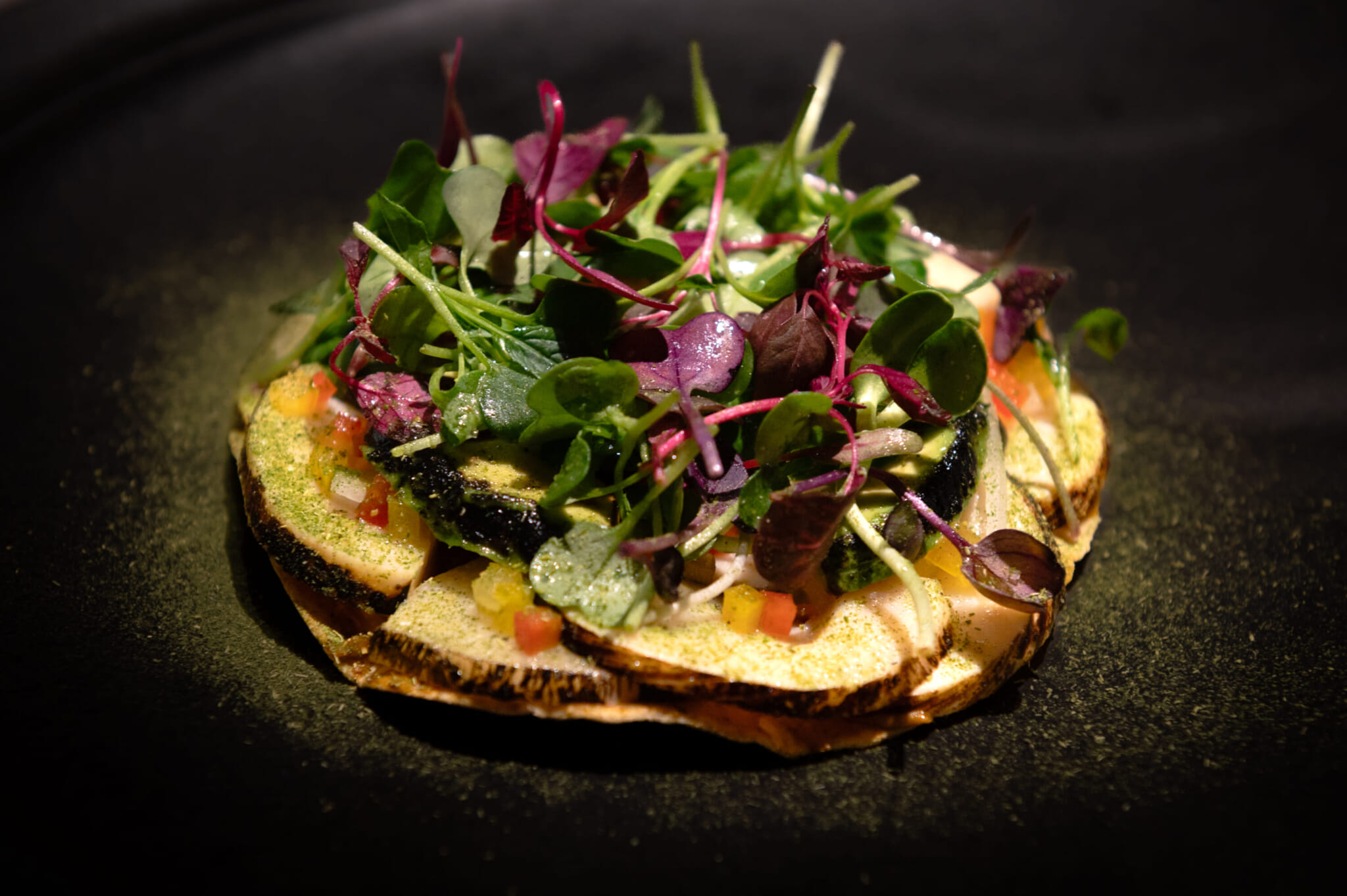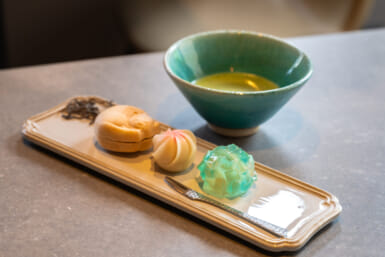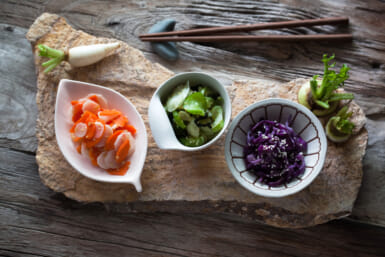When on the hunt for dinner in Tokyo, there is no shortage of international options. Tastes from across the globe can be found around almost every corner, giving visitors and locals alike plenty of choices. While this wealth of options makes standing out from the culinary crowd difficult, the understated Rubia shows us that it’s still possible to create something unique.
A contemporary fusion of Mexican and Japanese cuisine, the menu reflects not only a genuine affinity for Mexico but also a creativity that makes the experience of dining at Rubia unlike anything else found in Tokyo’s culinary scene. Combine that with Tahona, the mood-lit mezcal and tequila café and bar on the second floor, and you’ve got a setup sure to leave diners with lasting memories of great food and great times.
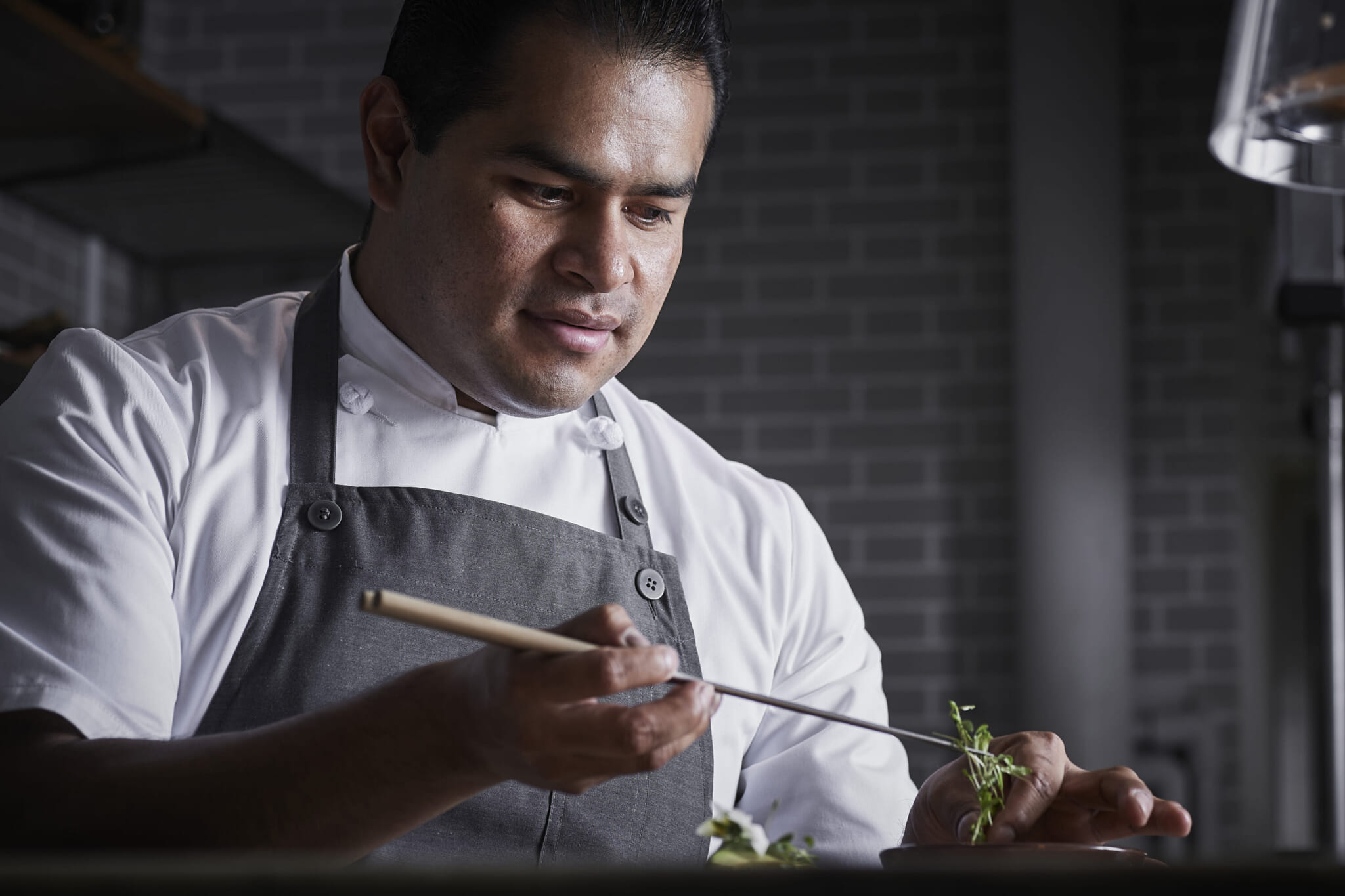
A Labor of Love
Owned and operated by Japanese artist DJ Sarasa, Rubia is not just a restaurant but an extension of Sarasa and her experiences while traveling. Although she’d seen much of the world through her work as a professional DJ, it wasn’t until she visited Mexico while on tour that she tried her first taco. “As soon as I tried it, I knew I wanted everyone else to try it too,” she says, smiling.
It was this love at first bite that resulted in Sarasa’s debut restaurant, Casa de Sarasa, which still operates in Shibuya and offers a quintessential Mexican menu centered around the tacos that started it all. Despite the success of her first restaurant, Sarasa still felt as though she had more to offer. “I wanted to do something that came from me, as a Japanese who has a special bond with Mexican people,” she explains.
Through repeated trips to Mexico, a country she still visits on a regular basis, Sarasa took it upon herself to become immersed in the world of Mexican cuisine. With the help of her business partner, restaurateur Edo Kobayashi, this mission soon saw her sharpening her skills in the kitchen of Mexican chef Enrique Olvera’s Michelin three-star restaurant, Pujol, in Mexico City.
Combining her deep understanding of fine Mexican dining with an equally potent knowledge of traditional Mexican art and liquor, Sarasa set about making her vision a reality. The restaurant’s name, Rubia, is the Spanish word for blonde and was chosen as a subtle nod to the hair color Sarasa became famous for while on tour as a DJ. The final task was finding a location.
Sarasa saw potential in an unoccupied building tucked away in a quiet corner of Shibuya not far from the station. Once in possession of the keys, she set about making the two-story structure her own. “I had a hammer and a chainsaw in my hand every day,” she says with a laugh.
Now in its third year of operation, Rubia is a reflection of Sarasa’s efforts and interests, with every aspect of the restaurant’s interior design and atmosphere, from the flooring, furniture and art to the playlist of chill beats, directly influenced by the DJ. The result is an all-encompassing cohesion that makes it feel as though you’ve stepped off the street in Tokyo straight into an upmarket neighborhood in Mexico City.
Collaborative Cuisine
While Rubia’s atmosphere alone gives diners a reason to visit, the menu also shines. Crafted in a kitchen with both Mexican and Japanese chefs — including head chef Cesar Ávila Flores, previously of Pujol — the food at Rubia tells a vibrant story of traditional Mexican and Japanese cuisine through a carefully curated and regularly updated course menu.
Across the courses, for which sake and wine pairings are available, diners are met with a variety of colorful ingredients that come together to create some genuinely unique tastes. For example, the bamboo chintextle tostada, a toasted tortilla topped with bamboo and an exceptionally rare and increasingly hard-to-come-by grasshopper paste, manages to deliver an authentic Mexican taste while maintaining a Japanese sensibility.
Perhaps one of the most delicious and symbolic examples of the Japanese-Mexican fusion is Rubia’s mole miso. Combining mole, a sauce used in a variety of traditional Mexican dishes, and miso, a staple of Japanese cuisine, mole miso boasts a richness and flavor that pair incredibly well with the seasonal vegetables that accompany it.
Rounding out the course menu is the yuzu cream bunuelo, a Mexican fritter topped with crystals of sugar and paired with cream and a yuzu soup. With this delectable finishing touch, it’s impossible not to feel as though you’ve had a one-of-a-kind meal — and this is exactly the reaction Sarasa has in mind for diners. “My goal is for people to have a new experience or make a new discovery,” she says.
Further highlighting this commitment to providing diners with a culinary encounter that can be enjoyed by all is the restaurant’s ability to accommodate the dietary requirements of diners. Dishes can be adjusted to suit the needs of vegetarians, vegans and those with gluten intolerance. Advance notice is not required for these requests.
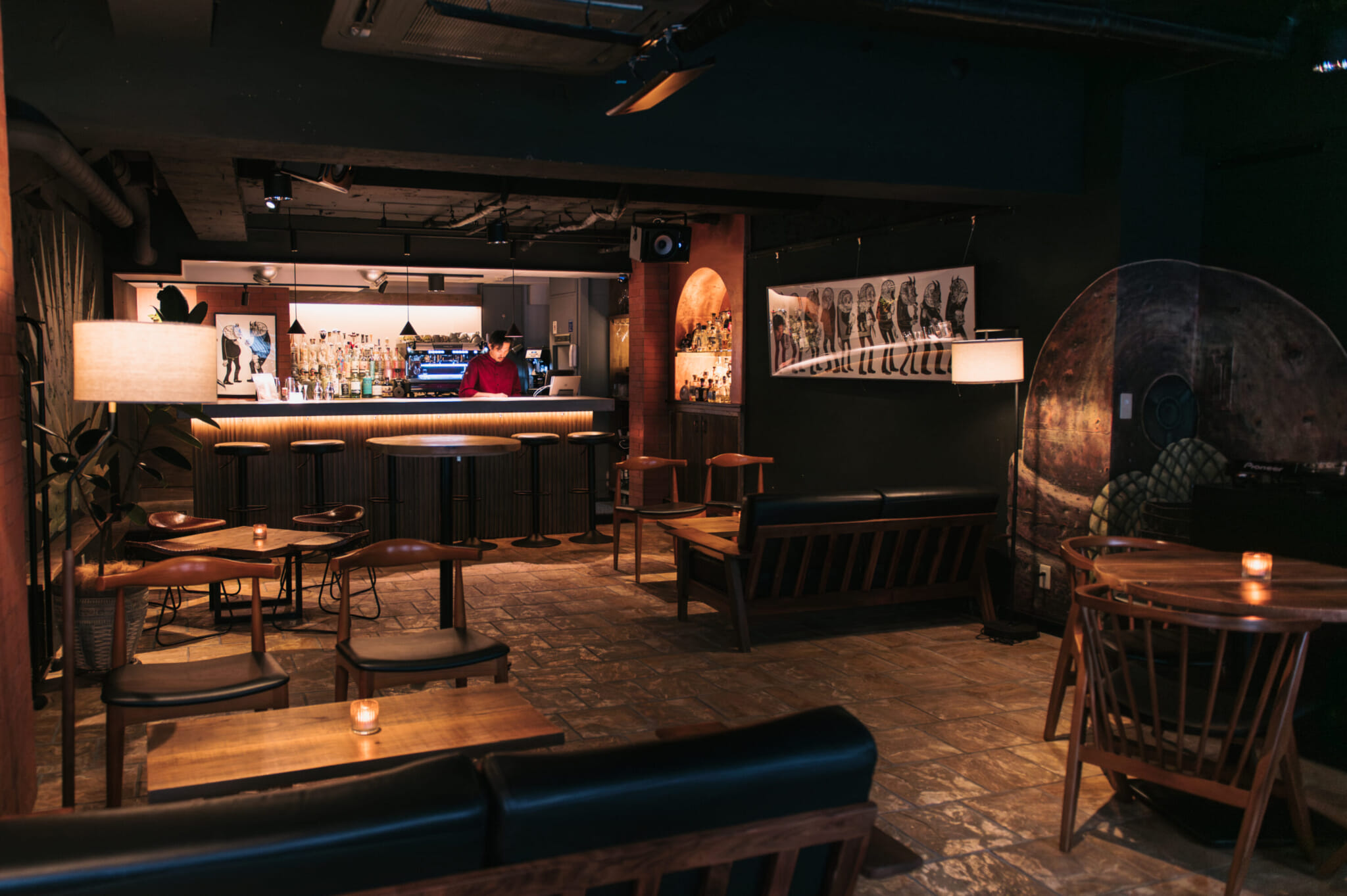
Photo by Lisa Knight
Moving to the Bar
Just because you’ve finished your meal at Rubia doesn’t mean it’s time to head home — quite the opposite, in fact. Upstairs, fine Mexican beverages await your arrival at Tahona.
Named after the large volcanic stone traditionally used in the process of making mezcal and tequila, Tahona offers the perfect place to relax and unwind with a coffee, cocktail or one of the many imported mezcals that can be found behind the bar. The food menu includes tacos, nachos and empanadas, and all items are made with the same attention to detail as those served at Rubia.
The bar, its atmosphere heightened by Sarasa’s design choices, which include a moody color palette, imported Mexican art and, of course, a playlist of perfectly paired beats, is open to both Rubia diners and the public. Whether you’ve just had dinner downstairs and are keen to keep the tastes of Mexico coming or you find yourself in the neighborhood in search of a bite to eat and a nightcap, a stop at Tahona is a great way to round out your evening.
| Location | |
| More Info |
Website →
0364165253 Closed on Mondays |

